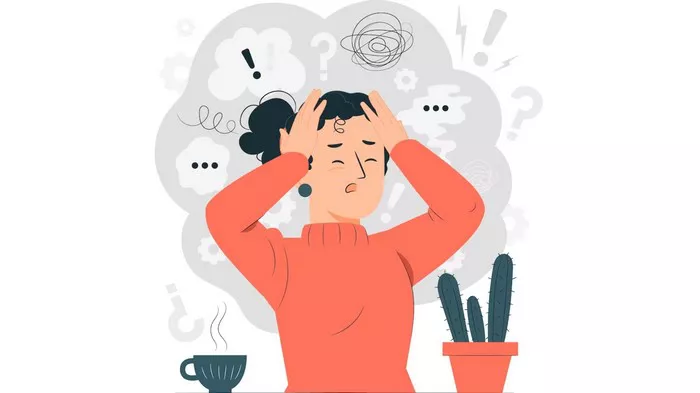Obsessions are intrusive, persistent thoughts, urges, or images that cause significant distress or anxiety. While many people experience occasional obsessive thoughts, individuals with obsessive-compulsive disorder (OCD) or other anxiety-related conditions may struggle with severe, recurring obsessions that interfere with daily life. This article explores the symptoms, causes, treatment options, and coping strategies for managing obsessive thoughts effectively.
Symptoms of Obsessions
Obsessive thoughts can take many forms and may vary in intensity. These thoughts are often irrational, unwanted, and difficult to control, leading to emotional distress and compulsive behaviors in some cases.
Common Characteristics of Obsessive Thoughts
Intrusive and Unwanted: The thoughts arise suddenly and are difficult to suppress.
Repetitive: They persist despite efforts to ignore or dismiss them.
Anxiety-Inducing: They cause significant distress and discomfort.
Irrational or Excessive: They may not align with reality but still feel overwhelmingly important.
Difficult to Control: Individuals often struggle to prevent the thoughts from recurring.
Common Types of Obsessive Thoughts
Obsessions can focus on a wide range of concerns. Some of the most common types include:
Contamination Obsessions: Fear of germs, dirt, or illness leading to excessive cleaning.
Harm Obsessions: Worry about causing harm to oneself or others, even without intent.
Perfectionism Obsessions: Needing things to be symmetrical, orderly, or exact.
Religious Obsessions (Scrupulosity): Fear of committing blasphemy, sinning, or being morally wrong.
Sexual Obsessions: Intrusive, distressing thoughts about inappropriate or unwanted sexual themes.
Existential or Philosophical Obsessions: Persistent worry about life, death, or the nature of reality.
Relationship Obsessions: Doubts about love, loyalty, or commitment in relationships.
When to Seek Help
Experiencing occasional obsessive thoughts is normal, but they become problematic when they:
Interfere with daily functioning at work, school, or home.
Lead to compulsive behaviors aimed at reducing distress.
Cause significant emotional distress or anxiety.
Persist despite efforts to suppress or control them.
Affect relationships, social interactions, or personal well-being.
If obsessive thoughts negatively impact your quality of life, seeking professional evaluation and support is essential.
Causes and Risk Factors
Obsessions can arise from various psychological, genetic, and environmental factors.
Biological Factors
Brain Chemistry: Imbalances in neurotransmitters like serotonin may contribute to obsessive thoughts.
Genetics: A family history of OCD or anxiety disorders increases the risk of developing obsessions.
Brain Functioning: Differences in certain brain regions responsible for impulse control and emotional regulation may play a role.
Psychological and Environmental Factors
Stress and Trauma: Traumatic events, major life changes, or prolonged stress can trigger obsessive thinking.
Personality Traits: Perfectionism, high sensitivity, and excessive worry can make individuals more prone to obsessions.
Childhood Experiences: Overly strict or critical parenting, bullying, or early exposure to fear-based beliefs may contribute.
Cultural and Social Influences: Societal pressures or religious teachings can sometimes lead to obsessive concerns about morality or purity.
Treatment Options
Obsessive thoughts can be effectively managed through therapy, medication, and self-help strategies. Treatment typically involves addressing both the cognitive and behavioral aspects of the condition.
Cognitive-Behavioral Therapy (CBT)
CBT is one of the most effective treatments for obsessive thoughts. It helps individuals challenge irrational beliefs and develop healthier coping mechanisms.
Exposure and Response Prevention (ERP): Gradual exposure to feared thoughts or situations without engaging in compulsions.
Cognitive Restructuring: Identifying and reframing irrational or exaggerated fears.
Behavioral Modification: Learning alternative ways to respond to obsessive thoughts without reinforcing them.
Medication
For individuals with severe obsessions, medication can help reduce symptoms.
Selective Serotonin Reuptake Inhibitors (SSRIs): Commonly prescribed medications like fluoxetine, sertraline, and fluvoxamine.
Tricyclic Antidepressants: Clomipramine is sometimes used when SSRIs are ineffective.
Anti-Anxiety Medications: In some cases, benzodiazepines may be prescribed for short-term relief, though they are not a long-term solution.
Mindfulness and Relaxation Techniques
Practicing mindfulness can help individuals manage obsessive thoughts more effectively.
Mindfulness Meditation: Observing thoughts without judgment rather than trying to suppress them.
Deep Breathing Exercises: Using controlled breathing to reduce anxiety and stress.
Progressive Muscle Relaxation: Systematically tensing and relaxing muscle groups to ease tension.
Yoga and Physical Activity: Engaging in regular movement to improve overall well-being and focus.
Support Groups and Therapy
Group Therapy: Sharing experiences and coping strategies with others facing similar challenges.
Individual Counseling: Working with a therapist to explore the root causes of obsessions.
Online or In-Person Support Groups: Connecting with communities that offer guidance and encouragement.
Coping Strategies for Daily Life
Beyond professional treatment, individuals can take practical steps to manage obsessive thoughts in everyday life.
Challenge and Reframe Thoughts
Recognize that obsessive thoughts are not necessarily true or meaningful.
Ask yourself: “What evidence supports this thought?” and “Is this thought helpful?”
Replace irrational fears with more balanced perspectives.
Reduce Avoidance Behaviors
Gradually expose yourself to feared situations instead of avoiding them completely.
Resist the urge to engage in compulsions to ease anxiety.
Remind yourself that anxiety will lessen over time with repeated exposure.
Set Time Limits for Obsessing
Designate a specific “worry time” each day to acknowledge obsessive thoughts.
Limit how long you spend analyzing or engaging with intrusive thoughts.
Redirect your focus to productive activities when obsessions arise.
Develop a Healthy Routine
Maintain a balanced lifestyle with adequate sleep, nutrition, and exercise.
Engage in hobbies and social activities to distract from obsessive thinking.
Practice gratitude and self-compassion to reduce negative self-talk.
Conclusion
Obsessions can be distressing and disruptive, but they are treatable with the right approach. Understanding the symptoms, causes, and available treatments can help individuals take control of their thoughts and improve their quality of life. Whether through therapy, medication, mindfulness, or lifestyle changes, managing obsessions is possible with patience and perseverance. Seeking professional help when needed can provide additional guidance and support, allowing individuals to regain a sense of normalcy and well-being.
You Might Be Interested In:

